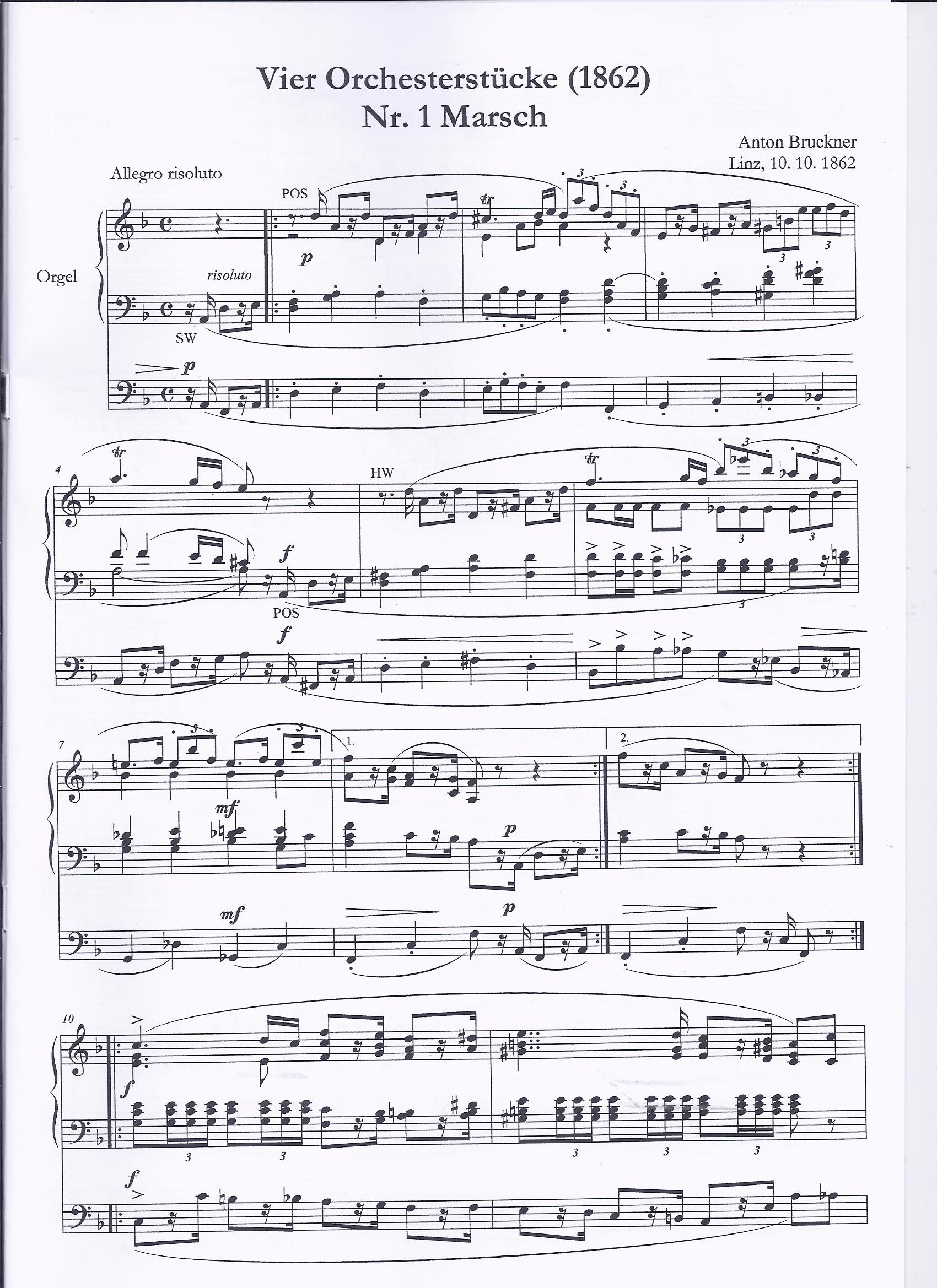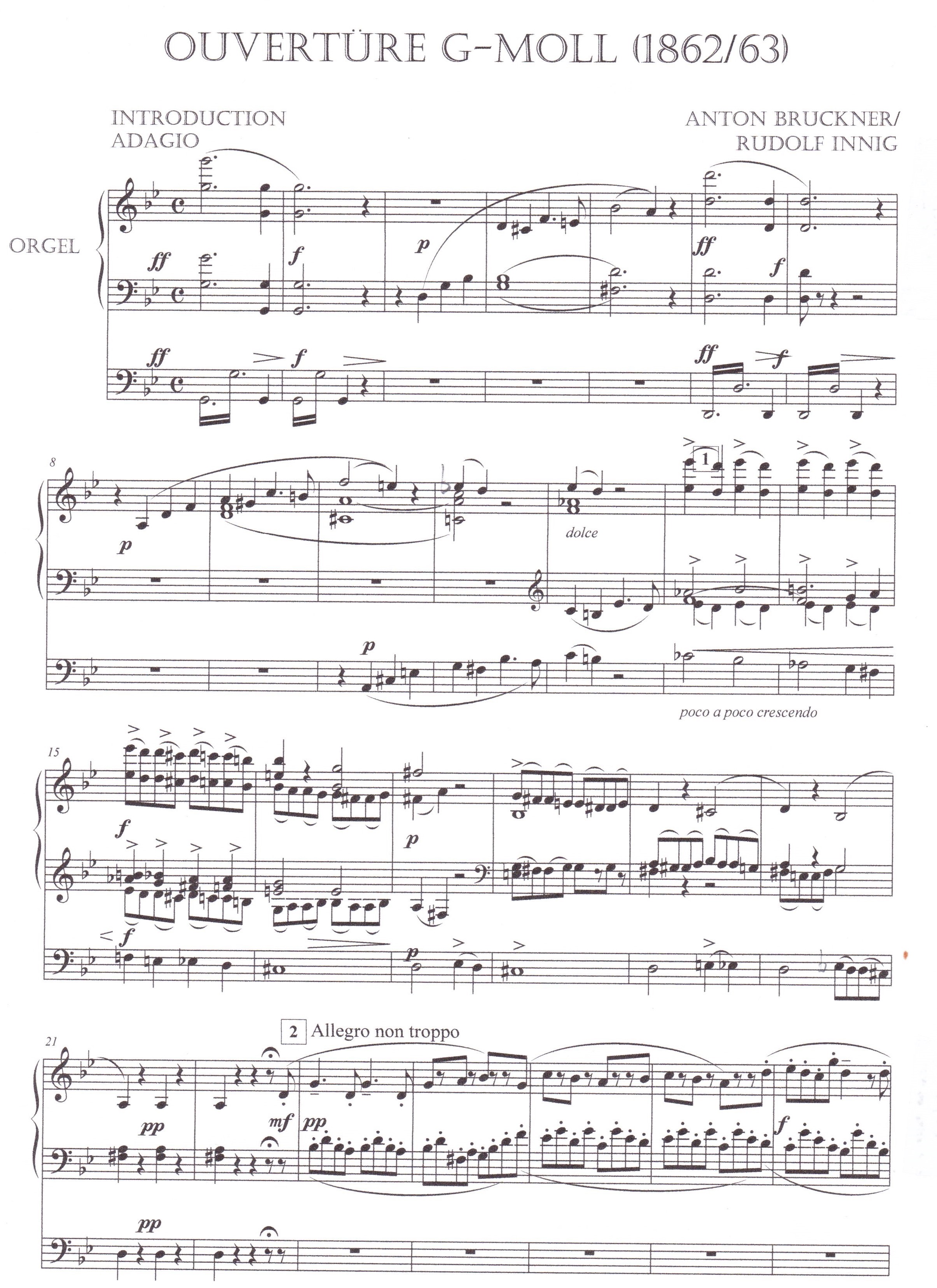
Anton Bruckner Four Orchestral Pieces (WAB 96+97) and Overture g-Minor (WAB 98)
During his time as organist at the cathedral in Linz (1855-1868), Anton Bruckner met the ten-year-younger theater conductor Otto Kitzler (1834-1915), who gave him the decisive inspiration for composing symphonic orchestral works between December 1861 and July 1863...
The March in D minor (WAB 96) and the Three Orchestral Pieces (WAB 97) presented here as an organ transcription and the Overture in G minor (WAB 96 to 98) are Anton Bruckner's earliest compositions for symphonic orchestra. They were written between October 1862 and January 1863 at the end of his studies with Otto Kitzler in free composition, which had begun in late autumn 1861 with simple exercises in form theory and ended with the composition of his first symphony in F minor (WAB 99) in the summer of 1863.
The March in D minor (WAB 96) and the Three Orchestral Pieces (WAB 97) are based on the first short pieces in the study book, in which Bruckner had become acquainted with the 'three-part song form' as a way of extending periods: they are short symphonic character pieces without any internal connection.
 The Overture in G minor, his first extended sonata movement, provides further insightful insights into Bruckner's characteristic symphonic form principles: Although it is based on the traditional sonata form (Bruckner's expression in his study book), which he had learned from Otto Kitzler, primarily on the basis of Johann Christian Lobe's composition theory (here also with a slow introduction created subsequently on his advice), the sonata movement of the 38-year-old composer deviates from this and is aimed primarily at the end of the piece, where the main theme surprisingly appears in a new sound form...
The Overture in G minor, his first extended sonata movement, provides further insightful insights into Bruckner's characteristic symphonic form principles: Although it is based on the traditional sonata form (Bruckner's expression in his study book), which he had learned from Otto Kitzler, primarily on the basis of Johann Christian Lobe's composition theory (here also with a slow introduction created subsequently on his advice), the sonata movement of the 38-year-old composer deviates from this and is aimed primarily at the end of the piece, where the main theme surprisingly appears in a new sound form...
The orchestral works by Anton Bruckner presented here as organ pieces are excellently suited to being performed on the organ, but Bruckner deliberately wrote them for the 'even larger instrument', the symphonic orchestra: after his six-year 'distance learning' in harmony and counterpoint with Simon Sechter in Vienna, his musical ideas had already become too complex to be expressed on the organ.
(Dr. Rudolf Innig)

